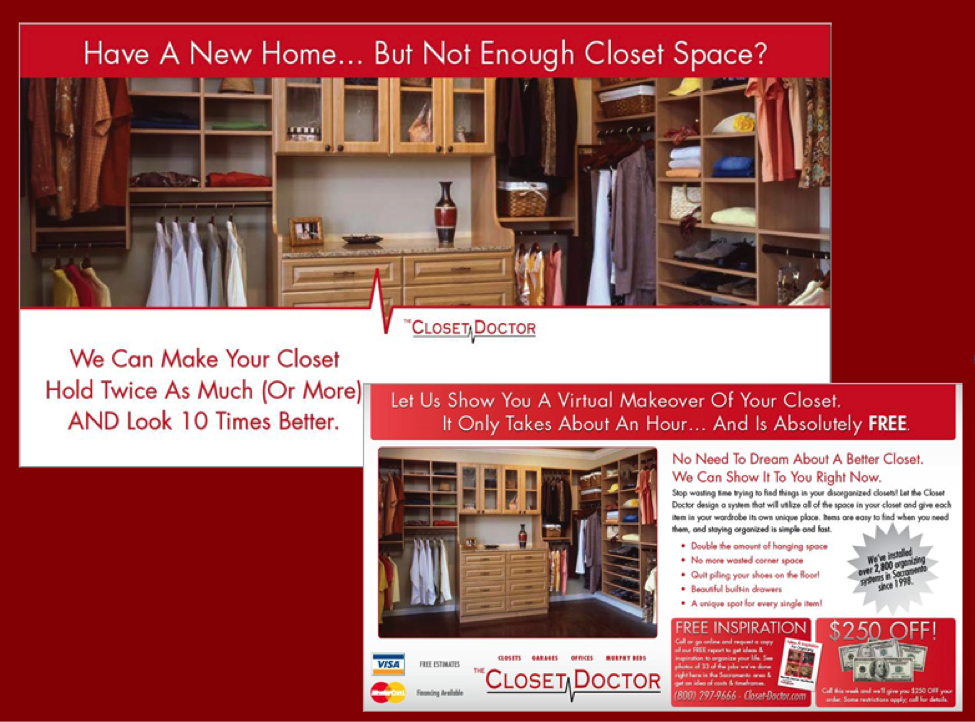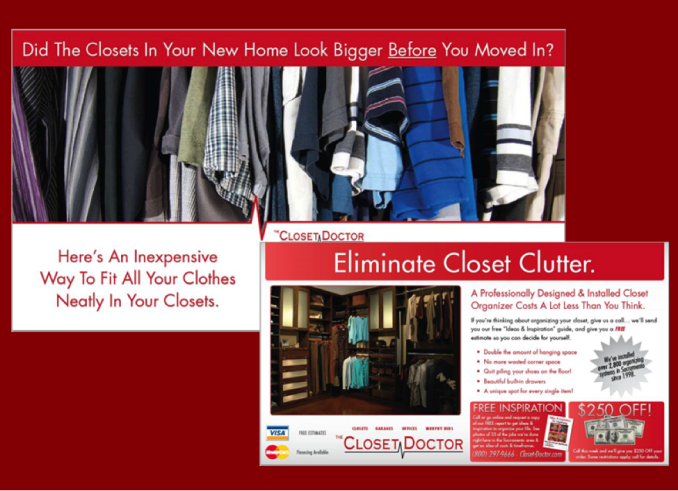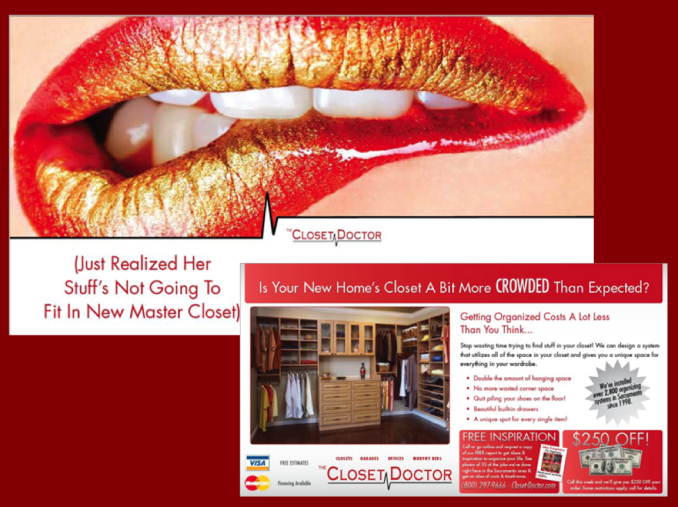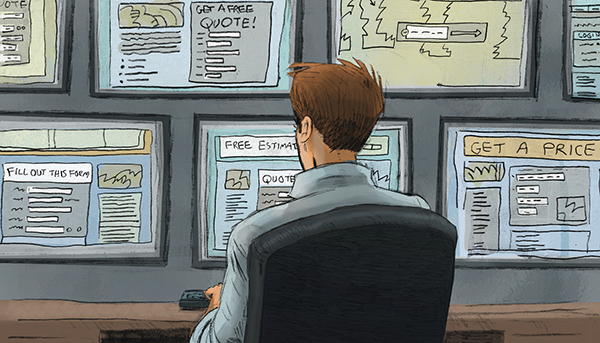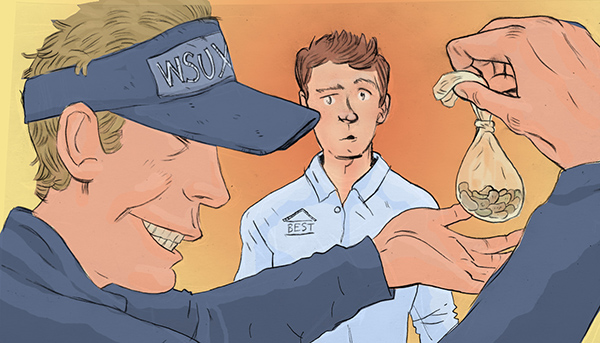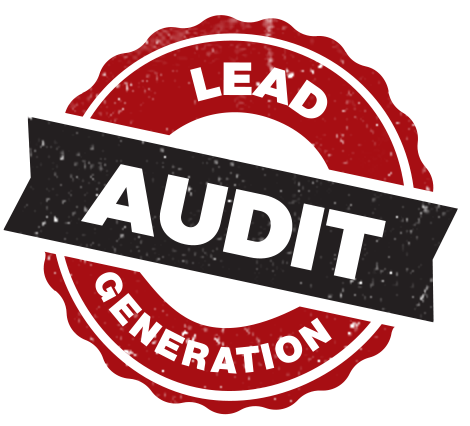
My dad was a real estate guy. And when I was young, he taught me the value of knowing your numbers.
When he dropped me off at BYU my freshman year, he gave me the calculator I still use to this day (I won’t say “over twenty-five years later,” because I’d be dating myself): the HP-12C Financial.
The thing is older than my oldest child, but it still works like a charm.
Since it’s a financial calculator, it calculates everything “backward,” which makes it confusing for the uninitiated. Seeing someone try to use it is like watching a caveman trying to operate an iPhone.
It’s pretty fun to witness.
Regardless of how you like to crunch your numbers, though, make no mistake—your calculator is your most important marketing tool.
By knowing your numbers, you can determine your marketing budget and how much advertising you can accomplish.
Let me show you a wild example.
An HVAC company wanted to target homeowners whose heat pumps were likely to fail within the next few years with a postcard campaign. The company had made a series of about six postcards they’d send every six weeks to a thousand homeowners who had heaters between 10 and 12 years old.
The goal was to get the homeowners to replace their heaters BEFORE they broke down. This would likely happen in the winter, which is a busy season for HVAC companies. Homeowners with broken heaters would have to suffer days in an ice-cold house while the HVAC company tried to fit them into their overloaded rotation.
As I reviewed this client’s marketing strategy, I had an overwhelming sense their campaign was going to fail.
Getting people to spend thousands of dollars on a problem they MIGHT have in the future can be a colossal feat. The client reasoned that “the longer you wait to replace your heat pump, the bigger the failure risk” would get people to take action.
I countered with “the longer a homeowner’s heat pump works, the more convinced they’ll become that it will never break.”
An ounce of prevention might be worth a pound of cure. But when we’re talking about people parting with their money, spending oodles of it on preventative measures isn’t something most folks are dying to do.
Think about it… do people buy treadmills BEFORE they get fat? Or those extended television warranties the cashier at Best Buy always tries to hock?
Nope.
But then the client told me something that changed the playing field.
He said it’s not a matter of “if” these heat pumps will fail—they WILL fail, guaranteed.
He said these heat pumps NEVER last longer than 13 years, so homeowners with a 10-year-old heating pump would without a doubt need one within the next 36 months. Period.
I asked him how sure he was the pumps would fail. I asked, “Would you bet your life that 100% of the pumps will fail by the time they’re 13?”
He said he’d bet his life that 90 percent of them would.
Time to bust out the ol’ HP-12C.
The client’s average sale was $8K with a gross profit of $3.5K. So 1,000 prospects on the client’s list is $3.5 million in potential gross over the next three years—$3.15 million if you exclude the 10% of heat pumps that might not fail.
Think about that—a guaranteed $3.1 million in gross profits over the next three years… just sitting there, ripe for the plucking.
Are you salivating yet?
A better question… how much cash would you be willing to spend to get that $3.1 million?
If it were me, I’d spend at least 10 percent of that number: $310K.
Why? So I could unleash the Wall Drug method (incessantly hammering prospects with your marketing message).
To start, I’d send one 6” x 11” inch postcard per week to each of the 1,000 prospects. That’s 52,000 postcards a year for three years, totaling roughly 150,000.
If every postcard costs 60 cents to send, the total cost for the 36-month campaign would be only $90K.
This is chump change compared to the anticipated gross profit, so let’s bump it up to two postcards per week—a little more than 100 per year per prospect. That’ll cost $180K, not including all the customers we’d remove from the list once they actually become customers and we quit mailing them. And we’ve still got $130K and change to spend.
Next, we’ll get a little old school. I’d hire a college-aged kid to knock on every one of those 1,000 doors every month.
If he knocked five days a week, he’d have to hit only 50 doors per day—easily done assuming all the homes are in a reasonably close proximity. After a couple months go by, the homeowners would immediately recognize my door knocker as the dude from the company that sends all the postcards that keeps coming by. If I paid that door knocker $3,000 per month, it would eat $108K out of my three-year budget—leaving me with just $72K remaining.
So let’s think of something fun to do with the remaining 70 grand. How about creating something for my door knocker to hand to people when he knocks their doors? Like fridge magnets. Or calendars. Or an ice cream scooper. Something—anything—for crying out loud.
At this point, you might be thinking, “Uh, Rich… so what message goes on all of these marketing touches?”
Here’s the thing: At the rate, we’re hitting prospects, it almost doesn’t matter what I put in the marketing message, as long as it’s something like “Hey, we can replace your freaking heat pump when it goes out?”
Seriously—this is more about what the calculator says than the messaging.
Now put yourself in your prospect’s shoes. Imagine receiving multiple postcards per week from an HVAC company warning you that your heat pump will most definitely fail within three years. How many weeks would it take before you started noticing the postcards? As in, “Hey, this company is sending me a crap load of mail!”? Around four or five weeks, probably.
Now think ahead 18 months. You’ve received two pieces of mail from the company every week for a year and a half, and the college kid has knocked on your door about 20 times. Is there any chance at all that you’re not aware of who this company is? Is there any conceivable way you DON’T know why this company is contacting you? No way, José.
This is what I call “Wall Drugging” potential customers. Hit them so often that they can’t help but recognize your name and brand.
Listen. I don’t want to hear, “But my company is different. We don’t sell heat pumps, and we don’t know exactly who our customers will be.” The moral of the story is to look at your numbers and determine how much you can spend to acquire a new sale.
How could you best spend that money? Use your calculator to find answers to these questions. You just might find a formula for success that you hadn’t expected.
Compliments of HP.




